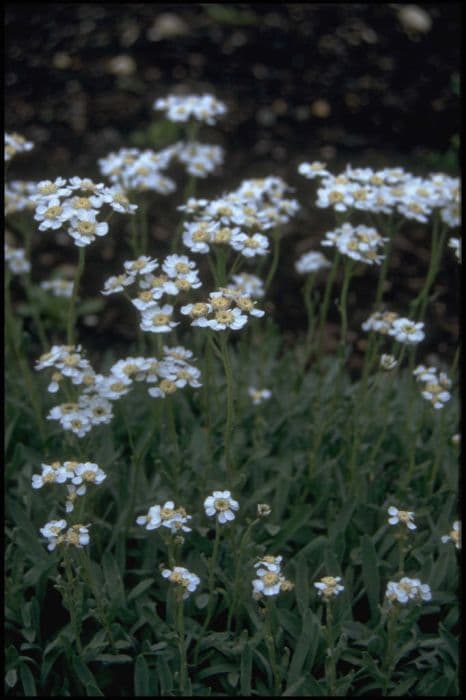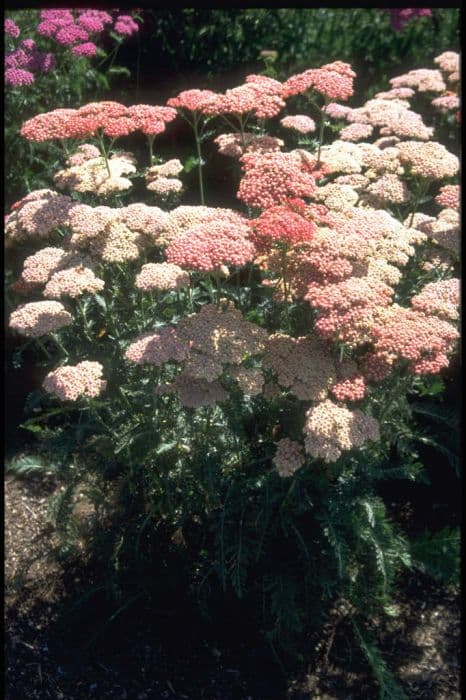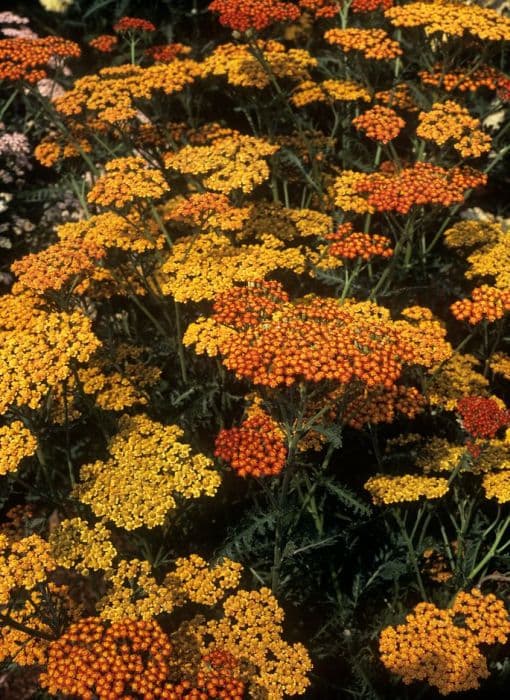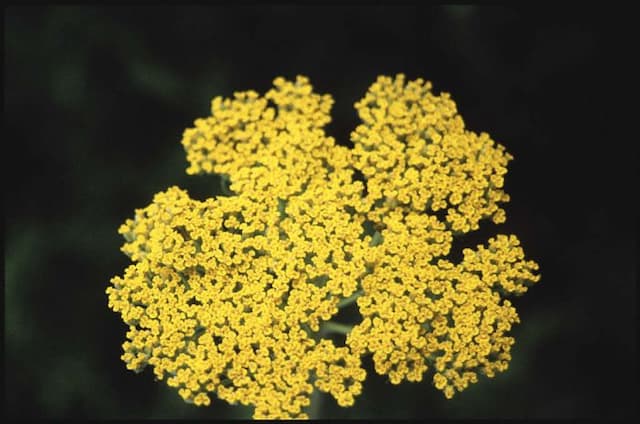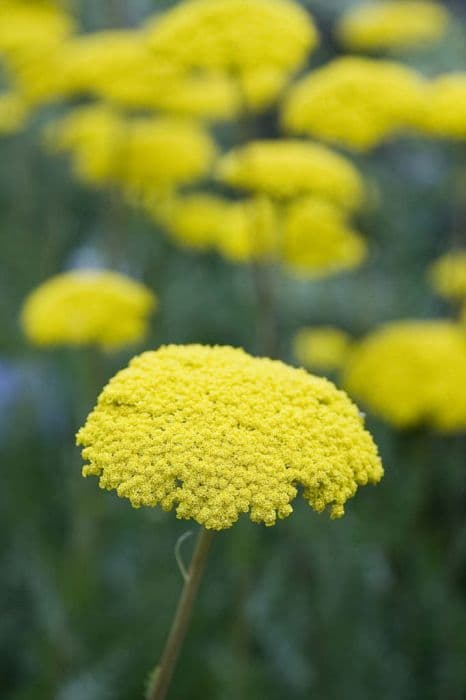Blazing Star Liatris spicata 'Floristan Violett'

ABOUT
The plant known as Floristan Violett is a perennial with a striking and elegant appearance. It is characterized by its fluffy, brush-like spikes of vibrant violet flowers, which are densely packed and create a bottlebrush effect. These flower stalks emerge from a rosette of slender, grass-like foliage that is medium green in color, providing a sharp contrast to the intense purple of the blossoms. The blooms typically open from the top down, which is somewhat unusual in the floral world, adding to its unique charm. The leaves of Floristan Violett are narrow, creating a tufted effect at the base of the plant. When in bloom, this plant becomes a haven for butterflies, bees, and other pollinators, who are drawn to its rich color and inviting shape.
About this plant
 Names
NamesFamily
Asteraceae.
Synonyms
Blazing Star, Gayfeather, Spike Gayfeather, Dense Blazing Star, Marsh Blazing Star, Dense Button-snakeroot.
Common names
Liatris spicata.
 Toxicity
ToxicityTo humans
The plant commonly known as Blazing Star is not known to be toxic to humans. Therefore, ingestion of any part of the Blazing Star plant typically should not lead to any toxic effects or symptoms of poisoning.
To pets
Blazing Star is also considered non-toxic to pets. This means that the ingestion of any part of the Blazing Star plant generally should not cause any toxic symptoms or negative consequences in animals such as dogs and cats. However, as with any non-food plant, ingestion in large quantities may cause gastrointestinal discomfort or other non-toxic related issues.
 Characteristics
CharacteristicsLife cycle
Perennials
Foliage type
Deciduous
Color of leaves
Green
Flower color
Violet
Height
2-4 feet (60-120 cm)
Spread
1-2 feet (30-60 cm)
Plant type
Herb
Hardiness zones
3-9
Native area
North America
Benefits
 General Benefits
General Benefits- Attracts Pollinators: Liatris spicata 'Floristan Violett', commonly known as Blazing Star, is known for attracting bees, butterflies, and other pollinators to the garden.
- Low Maintenance: Once established, Blazing Star is drought-tolerant, requiring minimal watering and care.
- Easy to Grow: This plant is adaptable to a variety of soil conditions and is considered easy to grow, making it a good choice for novice gardeners.
- Long Blooming: Blazing Star has a lengthy blooming period, providing vibrant purple flowers throughout the summer and into fall.
- Vertical Interest: The tall spikes of Blazing Star add vertical interest and structure to garden beds and borders.
- Cut Flowers: The blooms of Blazing Star make excellent cut flowers for bouquets and floral arrangements.
- Resistant to Pests: This plant is generally resistant to pests and diseases, reducing the need for chemical treatments.
- Wildlife Habitat: Blazing Star provides habitat and food sources for wildlife, contributing to the biodiversity of the garden ecosystem.
- Deer Resistant: Blazing Star is not typically favored by deer, making it a good choice for gardens in deer-prone areas.
- Seasonal Color: Adds splashes of color to the landscape when many other plants start to fade towards the end of the growing season.
- Naturalizing: Blazing Star can naturalize in an area, slowly spreading and creating more robust plantings over time without becoming invasive.
 Medical Properties
Medical PropertiesThis plant is not used for medical purposes.
 Air-purifying Qualities
Air-purifying QualitiesThis plant is not specifically known for air purifying qualities.
 Other Uses
Other Uses- Butterfly Gardening: Blazing star's tall spikes of purple flowers are a magnet for butterflies, providing a nectar source to help support butterfly populations.
- Textile Dyeing: The flowers of the blazing star can be used to create natural dyes in shades of purple and pink for coloring fabrics.
- Natural Crafts: Dried Liatris spicata 'Floristan Violett' stalks are often used in floral arrangements and natural craft projects due to their sturdy stems and long-lasting blooms.
- Wedding Bouquets: Due to their unique and striking appearance, blazing star flowers are a popular choice for inclusion in wedding bouquets and floral decorations.
- Education and Research: Horticulture and botany programs may use Liatris spicata 'Floristan Violett' as a specimen for studying plant structure, pollination, and ecology.
- Erosion Control: The deep root system of blazing star helps to hold soil in place, making it a useful plant for stabilizing slopes and preventing soil erosion.
- Photography Prop: With its striking blooms, blazing star is a beautiful subject for photographers, especially those interested in macro and nature photography.
- Culinary Garnish: The vibrant flowers can be used as an edible garnish for salads and desserts, although they are not widely known for their flavor or culinary use.
- Traditional Crafts: Indigenous cultures may use the plant in traditional crafts for ceremonial purposes or as part of a natural color palette.
- Art Inspiration: The form and color of blazing star inspire artists and can be seen represented in various forms of art, from painting to textile design.
Interesting Facts
 Feng Shui
Feng ShuiThe plant Liatris, also known as Blazing Star, is not typically used in Feng Shui practice.
 Zodiac Sign Compitability
Zodiac Sign CompitabilityThe plant Liatris, also known as Blazing Star, is not used in astrology practice.
 Plant Symbolism
Plant Symbolism- Happiness and Joy: Liatris spicata 'Floristan Violett', commonly known as Blazing Star or Gayfeather, often represents an open heart and a sense of joy, bringing a happy energy to bouquets and gardens.
- Pride: With its tall, spike-like appearance, the Blazing Star can symbolize pride or self-esteem, reminiscent of someone standing tall and confidently.
- Attraction: The unique and striking form of the flower spikes are said to symbolize attraction, making it a suitable gift for someone you are drawn to or admire.
 Water
WaterFor the Gayfeather, or Liatris spicata 'Floristan Violett', consistent moisture is key, especially during its growth and bloom periods. Water this perennial plant deeply once a week, providing about 1 inch of water each time. During hot, dry spells, you may need to water twice a week. Ensure the plant receives approximately 1 gallon of water per week per plant, but adjust as necessary for your local conditions and rainfall. Avoid overwatering as good drainage is essential for the health of the plant.
 Light
LightThe Gayfeather thrives best in full sun conditions, which means it should receive at least 6 to 8 hours of direct sunlight each day. Place it in a spot in your garden where it can enjoy unfiltered sunlight. Light shade is acceptable, but too much shade can lead to weak stems and sparse flowering.
 Temperature
TemperatureGayfeather plants are hardy in a wide range of temperatures and can survive in environments where the temperature drops as low as 20°F and can tolerate high summer temperatures up to 90°F. For optimal growth, they prefer the soil temperature to be around 70°F. They can thrive in the typical garden environment without requiring any special temperature adjustments.
 Pruning
PruningPruning Gayfeather, or Liatris spicata 'Floristan Violett', is mostly done to remove spent flower stalks, which encourages tidiness and may promote a second bloom. Deadhead the plants as the flowers fade. Cut back the foliage to the ground in late fall or early spring before new growth starts. The best time for general pruning is in the spring to remove any dead or damaged parts from the winter.
 Cleaning
CleaningAs needed
 Soil
SoilFor Gayfeather (Blazing Star), the best soil mix is well-draining soil amended with compost or other organic matter. The soil pH should ideally be in the neutral range of 6.0 to 7.0. A mix of loamy soil with peat moss and perlite can improve drainage and aeration.
 Repotting
RepottingGayfeather (Blazing Star) typically does not need frequent repotting. It should be repotted every 2-3 years or when it becomes root-bound in its current container.
 Humidity & Misting
Humidity & MistingGayfeather (Blazing Star) is tolerant of a wide range of humidity conditions and does not have specific humidity requirements. Average room humidity should suffice for this perennial.
 Suitable locations
Suitable locationsIndoor
Plant with plenty of light; don't overwater Gayfeather.
Outdoor
Full sun, well-drained soil, moderate moisture for Gayfeather.
Hardiness zone
3-9 USDA
 Life cycle
Life cycleLiatris spicata 'Floristan Violett', commonly known as Blazing Star or Gayfeather, begins its life cycle when the seeds germinate in early spring after a period of cold stratification, which breaks seed dormancy. As the weather warms, the plant develops a rosette of narrow leaves from a corm, which is an underground storage organ. The plant grows tall flowering stalks in mid-summer, usually between June and August, featuring fluffy, purple, tufted flower heads that bloom from the top down. After pollination, often by butterflies and bees, the flowers produce achenes (small, dry, one-seeded fruits typical of the Asteraceae family) which are dispersed by wind or wildlife, allowing the plant to spread. During the fall, the plant's aboveground parts die back, while the corm survives underground through winter. The cycle restarts in the spring, making it a perennial plant with a life-span of several years.
 Propogation
PropogationPropogation time
Late spring to early summer
Propogation: The most popular method of propagating Blazing Star or Gayfeather (Liatris spicata 'Floristan Violett') is through its corms, which are the plant's bulb-like storage organs. Propagation is typically done in the spring after the last frost when soil temperatures have begun to warm. Gardeners should select healthy corms and plant them about 4 to 6 inches (approximately 10 to 15 centimeters) deep and spaced about 12 inches (30 centimeters) apart to provide enough room for growth. The soil should be kept evenly moist but not waterlogged to encourage root development. By midsummer, these corms will have established themselves sufficiently to produce strong, vibrant flowering spikes.
